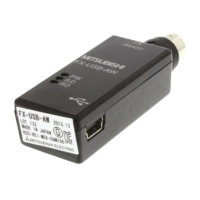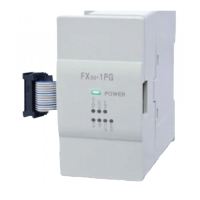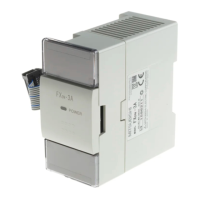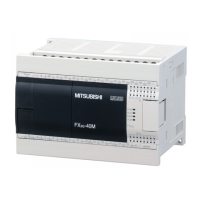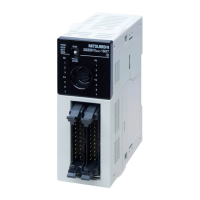Positioning method type The Basics of Positioning Control
FX Positioning Control Systems 1 - 7
Pulse count method
A position detector (such as a pulse encoder) is set up in a motor or rotation axis. The pulse number
generated from the position detector is counted by a high-speed counter. When the pulse number
reaches the preset value, the moving part stops.
In this method, because limit switches are not used, the stop position can be easily changed.
– Guideline of stopping precision: Approximately ±0.1 to 0.5 mm
(The stop precision shows a value in a case where the low speed is 10 to 100 mm/s.)
In speed control applications with inverters, stop precision is not very accurate. With the limit switch
method, a system operates without any feedback to the controller to indicate the location of the
workpiece. With the pulse count method, the speed can be changed and the stop command can be
executed at specific distances (at specific timings) according to the feedback from the pulse
generator connected to the motor. Both the limit switch method and the pulse count method,
however, are subject to a loss in stop precision due to the dispersion of distance that occurs for
workpieces at different speeds.
● When automatically stopping a moving part driven by a motor, stop the motor by a position signal
(using a limit switch or pulse count comparison). In general conditions, turn on the brake at the
same time.
120090da.eps
Fig. 1-9:
Schematic drawing – Pulse count method
PLG
IM
INV
Moving part
Ball screw
DC 0 to
10 V
Inverter
Pulse generator
Inductive motor
High speed
Low speed
Pulses are fed
back
PLC
Programmable
controller
High speed
counter unit
Movement distance
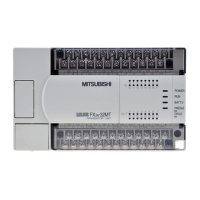
